Connecting With Cuba Through Competition
Published on October 26th, 2015
Pensacola, FL (October 26, 2015) – A classic race returns to Florida’s Gulf of Mexico waters when the new Pensacola a la Habana Race starts Saturday, October 31 from Pensacola Bay, Florida. This is the first fully permitted, major ‘offshore’ yacht race from a US port to a port in Cuba since 1959.
Racing will be for a spectacular new perpetual trophy donated by Pensacola’s Pace family. It’s the “Pace Perpetual Trophy” awarded to the first overall monohull yacht in race on corrected time. Division trophies will be large pewter sailboats appropriately inscribed for the occasion. Class trophies will be awarded as well as participation medallions.
The Pace family, with their historic Cuba Race background and their interest in promoting the new race, provided a substantial donation to the PYC Satori Foundation. Funds were earmarked for the Pace Perpetual Trophy, the new Pensacola to Havana Race, and Satori’s activity.
The overall race winner will be honored by a presentation line that will include Commodore McMillan from Pensacola and Commodore Escrich of Hemingway International, a representative of the US government in Cuba, and Regatta Chairman Bob Kriegel. The trophy will remain in Pensacola on perpetual display.
As boats pound their way across the Gulf of Mexico to Cuba, land-bound spectators can track their favorite boats from start to finish. Each boat will be equipped with a position transponder that will broadcast its location to home computers, laptops, pads and smartphones. To access the Kattack monitoring system, click here.
The original Havana Race was sailed from St. Petersburg FL when 11 boats hit the starting line on March 30, 1930. The competition grew in size and stature to be a favorite of Gulf Coast sailors. It became a preliminary to the famous Southern Ocean Racing Circuit and attracted top yachts from the Americas and the international scene.
But when bullets started flying at masts, and Castro overthrew the Cuban government, the race was discontinued in 1959. See more at “A History of Pensacola Yacht Club’s Involvement with the Havana Race” prepared by Tom Pace, Jr. at http://www.cubarace2015.com
Twenty-three boats are currently entered for this historic challenge, double the original fleet in 1930. There are three divisions— ten Modern Cruisers, nine Classic Cruisers, and four Multihulls. Racing will be scored under the Gulf Yachting Association’s Performance Handicaps [PHRF]. Specific handicap adjustments are made for this race to encourage cruiser type entries. The adjusted ratings promise to even the diverse group into a competitive fleet. Even the four multihulls will carry their GYA PHRF handicaps into the fray.
Chairman Kriegel, himself a competitor as skipper of the classic cruiser “Acadia”, a Pearson 424, is pleased with the turnout. “We got a late start with organizing this race,” Kreigel said, “because the change in US policy toward Cuba didn’t come down till this past spring. We started meeting at the Pensacola Yacht Club and got organizing authority approval from our board in April.”
“There were lots of ‘red tape’ obstacles,” Kriegel added, “including insurance issues. The goal was to reach 20 entries and we have surpassed that. Next time, we should double that number when the doors are really open. We hope that this initial Pensacola-Habana race will renew yachting friendships and be a catalyst that reaches out to help the Cuban people.”
All participants in the race originally required licensing from the Department of Commerce, but that seems to have been relaxed by late changes on government rules.
The 2015 race is longer than the 1930-59 model at 584 miles (511 nautical miles official distance) from Pensacola to Havana vs. 284 miles from St Pete, according to Pace. The new race starts with the tide at the end of the Bayou Chico Channel, heads through Pensacola Pass, leaves the sea buoy #1 to starboard and heads straight to Havana leaving Rebecca Shoals Light to port.
The direct, rhumb-line course will use the southbound side of the loop current in the Gulf of Mexico to give the fleet a nice ride to Havana. That part of the Gulf Stream does have tricky eddies in it that can hand out some adverse current slowing the progress of those yachts unlucky enough to find them.
The Castillo del Morro Race: Friendly Competition
The goal of the new Cuba race is to establish friendly, amateur athletic competition between the US sailors and the people of Cuba. Once in Cuba, the Pensacola a la Habana racers will be joined by local racers and other boats mooring in the Hemingway Marina in The Castillo del Morro Race.
The race is scheduled in Havana for Friday November, 6th. It will have a course that will be from the Almendares River mouth – entry buoy to Havana Harbor- Hemingway Marina. This course is spectator friendly for the Cuban people and US spectators traveling to Cuba. The boats will leave the Hemingway Marina for the starting line at 9:00AM and the start will be approximately 11:00AM local time.
José M Diaz Escrich, Commodore of the Hemingway International Yacht Club extended his welcome from the Cuban hosts, “It pleases me to reach out to you on behalf of the Hemingway International Yacht Club of Cuba, and on my own, to express that we greatly look forward with much enthusiasm and joy to give a warm welcome to all participants in the Pensacola to Havana Regatta.”
“In Cuba, we anticipate the participation of four to six local vessels in the Castillo del Morro Race. These vessels are owned by members of the [Hemingway International] Yacht Club, Cubans living in Cuba and some temporary sailboats staying at Hemingway Marina. They are cruiser class yachts.”
Trophy presentations for the Pensacola a la Habana Race and the Castillo del Morro Race will be held at 7:00PM at the Hemingway International Yacht Club.
More information is available at http://www.cubarace2015.com
Report by Talbot Wilson


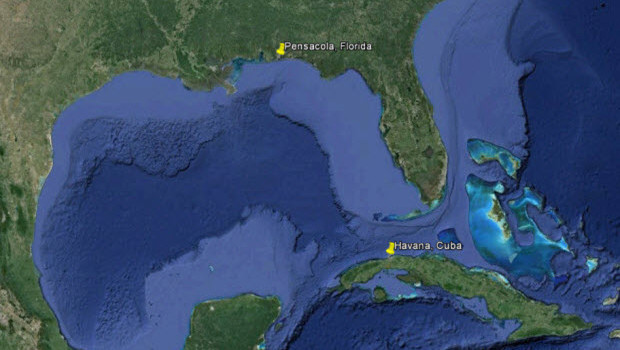


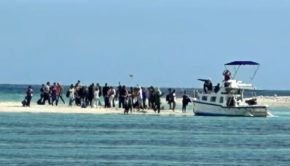
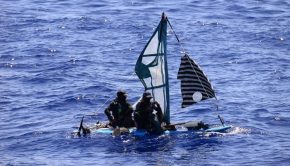
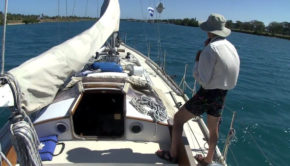
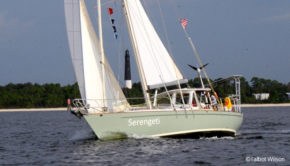
 We’ll keep your information safe.
We’ll keep your information safe.